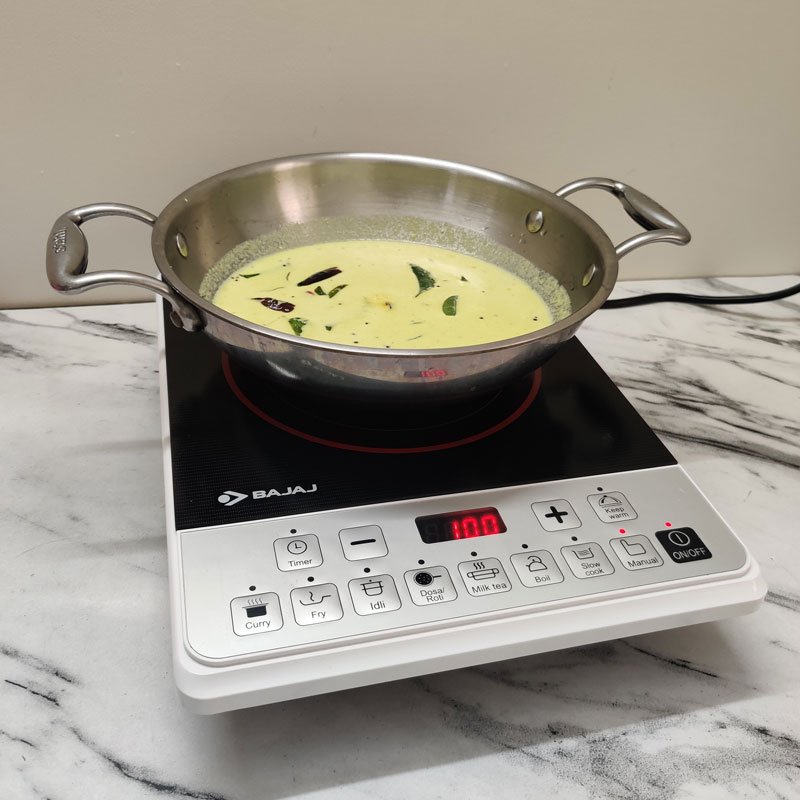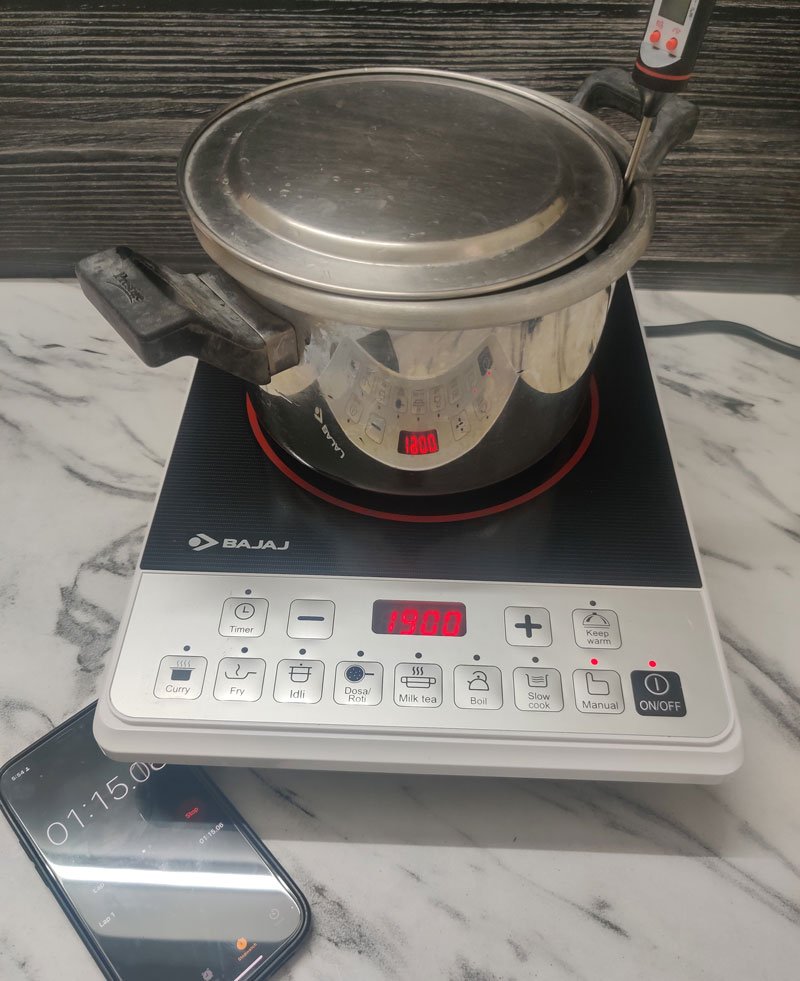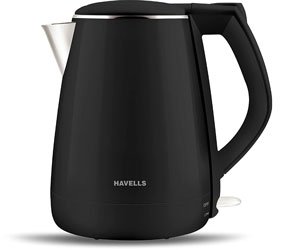Kettles and induction cooktops have emerged as popular choices due to their convenience and speed. Yet, as energy-conscious consumers, we would love to know which one of them is more energy efficient.
In this article, we delve into the age-old debate of kettle versus induction cooktop, exploring their energy efficiency and environmental impact. To test this out practically, we use an induction cooktop and kettle with same power rating and check which of them boils water quicker. This way, you can understand which option to choose when you need to boil water for your brew.
How Kettles Work?

Inside a kettle, you’ll find an electric coil, typically made of a material called nichrome, known for its high electrical resistance. When you turn on the kettle, an electric current passes through this coil, and the high resistance causes it to generate heat. This heat, in turn, rapidly boils the water.
However, the heating element is carefully concealed beneath the kettle plate. This design ensures that the heating element doesn’t come into direct contact with the water. By keeping this separation, the kettle efficiently transfers heat to the water without compromising its own integrity.
To further enhance safety and efficiency, kettles are equipped with an in-built thermostat. This intelligent control mechanism continuously monitors the water temperature. Once the water reaches its boiling point, the thermostat automatically activates the auto shut-off feature. This prevents the water from over boiling and protects the kettle from dry heating, ensuring its longevity.
How Induction Cooktops Work?

Induction cooktops harness the principle of electromagnetic induction, creating a magnetic field in a copper coil when alternating electricity passes through it. This magnetic field induces an electric current within the base of compatible cookware that contains iron content, such as cast iron or stainless steel. The result is resistive heating, where the cookware rapidly warms up. The unique aspect of induction cooking is that the heat is directly transferred to the food, bypassing the cookware’s surface. However, it’s essential to note that for this process to work, the cookware must have iron content, which is why materials like cast iron, stainless steel, and induction-base cookware work efficiently, while materials like aluminum, copper, and clay are not suitable for induction cooktops.
Now, let us take a look at our experiment to understand which of the two is more energy efficient.
The Experiment

To try out this experiment, we used Bajaj ICX Pearl induction cooktop which consumes 1900 watts of power and V-Guard VKS 17, which also consumes the same power. We poured 1 litre of water into each and set it out for boiling at the highest setting.
To ensure a fair comparison, we sought to boil water in a closed utensil on an induction cooktop, just like in a kettle. However, for the purpose of monitoring the temperature, a slight space was made to accommodate a thermometer. Considering that a kettle typically has a small opening in the form of a spout, we believe this slight variation did not significantly impact the overall comparison. This approach allowed us to analyze the performance of both appliances under similar conditions and draw accurate conclusions regarding their efficiency and effectiveness.
Results
We were able to boil 1 litre water in 3.1 minutes using the kettle. As for induction cooktop, it took us 4.2 minutes to boil 1 litre water to 100 C. Hence, it can be deduced that kettles are more energy efficient for boiling water. This is because as water comes in direct contact with heating element in kettles. Moreover, heat dissipation is minimal in kettles which have double walled body. Further, heat transfer in induction cooktop depends on the type of cookware too, which may increase the duration.
Factors Beyond Energy Efficiency
When it comes to buying kitchen appliances, versatility is a crucial factor to consider. Many people prefer appliances that can perform multiple functions to make the most of their investment and save space. In this regard, an induction cooktop outshines a kettle by offering a wide range of cooking possibilities. With an induction cooktop, you can do much more than just boiling water; it can help you prepare curry, rice, and various other dishes.
On the other hand, kettles have relatively limited functionalities, primarily focusing on boiling water. However, they have their own advantages – they are compact, convenient, and user-friendly. If you’re seeking an appliance that can handle multiple cooking tasks, an induction cooktop would be an excellent choice to meet your needs. But, if your main requirement is a simple and straightforward device for boiling water, a kettle would be more suitable. Moreover, advanced kettle models even come with temperature control features, enabling you to brew the perfect drink every time.
Tips To Optimize Energy Efficiency When Boiling Water
- Always close the cookware with a lid when boiling water in induction cooktop to reduce cooking duration.
- Boil just sufficient quantity of water so that you do not waste energy.
- Use right sized cookware when boiling water on stove.
- Descale kettle regularly so that for optimal heat transfer efficiency.
- Use right temperature settings in induction stove to reduce energy consumption.
Top Kettles We Recommend

Havells Aqua Plus 1.2 litre Kettle

V-Guard VKS17 Prime 1.7 Litre Electric Kettle
Related reading: Best Electric Kettles In India
Top Induction Cooktops We Recommend

Philips Viva Collection HD4928/01 2100-Watt Induction Cooktop

Amazon Basics 2000 Watt Induction Cooktop
Related reading: Best Induction Cooktops In India

Useful article, thank you. Top article, very helpful.